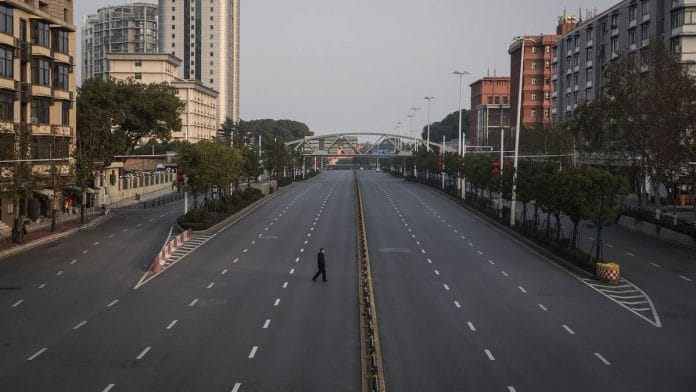New Delhi: Up to three times more people might have had Covid-19 in Wuhan during the epidemic than recorded in official figures, a study by Chinese researchers has found.
Wuhan, a city in China’s Hubei province, is believed to be the origin point of Covid-19, which has spread around the world since it was first discovered there in late 2019.
The study was conducted by researchers from different establishments — including Lanzhou University and Wuhan University — and involved blood samples collected from March to May 2020. It was a seroprevalence study, which involves detecting antibodies in study subjects.
Such studies have been crucial during the Covid pandemic because they help assess the actual spread of the disease in the area, as they are used to detect even those asymptomatic patients who may have recovered without medical intervention.
The study was published Thursday by the PLOS Neglected Tropical Diseases journal.
As part of the seroprevalence study, the researchers analysed blood samples from 63,107 healthy individuals across China in the survey period. The participants formed three cohorts — those from Wuhan, those from Hubei (excluding Wuhan), and those from the rest of China (excluding Hubei).
Analysis of the samples, the researchers said, led to the finding that 1.68 per cent of the samples from Wuhan contained antibodies for SARS-CoV-2. This translates to 1.68 lakh people among China’s population of 1 crore or 10 million. Till 19 May 2020, however, China had reported 78,241 cases of Covid-19, of which 64.3 per cent or 50,340 cases were in Wuhan.
“Wuhan city has reported 50,340 hospitalised Covid-19 patients as of 19 May 2020, indicating that only one third SARS-CoV-2 infected persons need to be hospitalised and at least 2/3 infected persons were asymptomatic in the city,” said the study.
“A large amount of asymptomatic carriers of SARS-CoV-2 existed after elimination of clinical cases of Covid-19 in Wuhan City. Therefore, SARS-CoV-2 may exist in a population without clinical cases,” the study concluded.
Also Read: Covid virus developed in Wuhan lab, highly mutant — Hong Kong virologist says she has evidence
Situation within China
The study found that the seroprevalence of SARS-CoV-2 was “relatively low” in Wuhan and other provinces of China. However, within the country, the researchers found a “significantly higher” seroprevalence in Wuhan than in any other province of China.
Around 0.59 per cent of the Hubei cohort was found to be seropositive, while the number was 0.38 per cent for rest of China. Seropositive individuals were recognised in 18 out of 30 provinces of China.
An earlier study conducted by the Chinese Center for Disease Control and Prevention had estimated a seroprevalence of 4.4 per cent in Wuhan in April 2020.
The study was published in December 2020 and involved a serological survey of more than 34,000 people.
Based on the findings, the study estimated that as many as 5,00,000 residents of the city may have been infected with Covid-19. This was almost 10 times more than the officially reported cases in Wuhan at the time, which was reportedly 50,000.
Also Read: Serosurvey in Wuhan found no new confirmed Covid cases in post-lockdown months, study says






